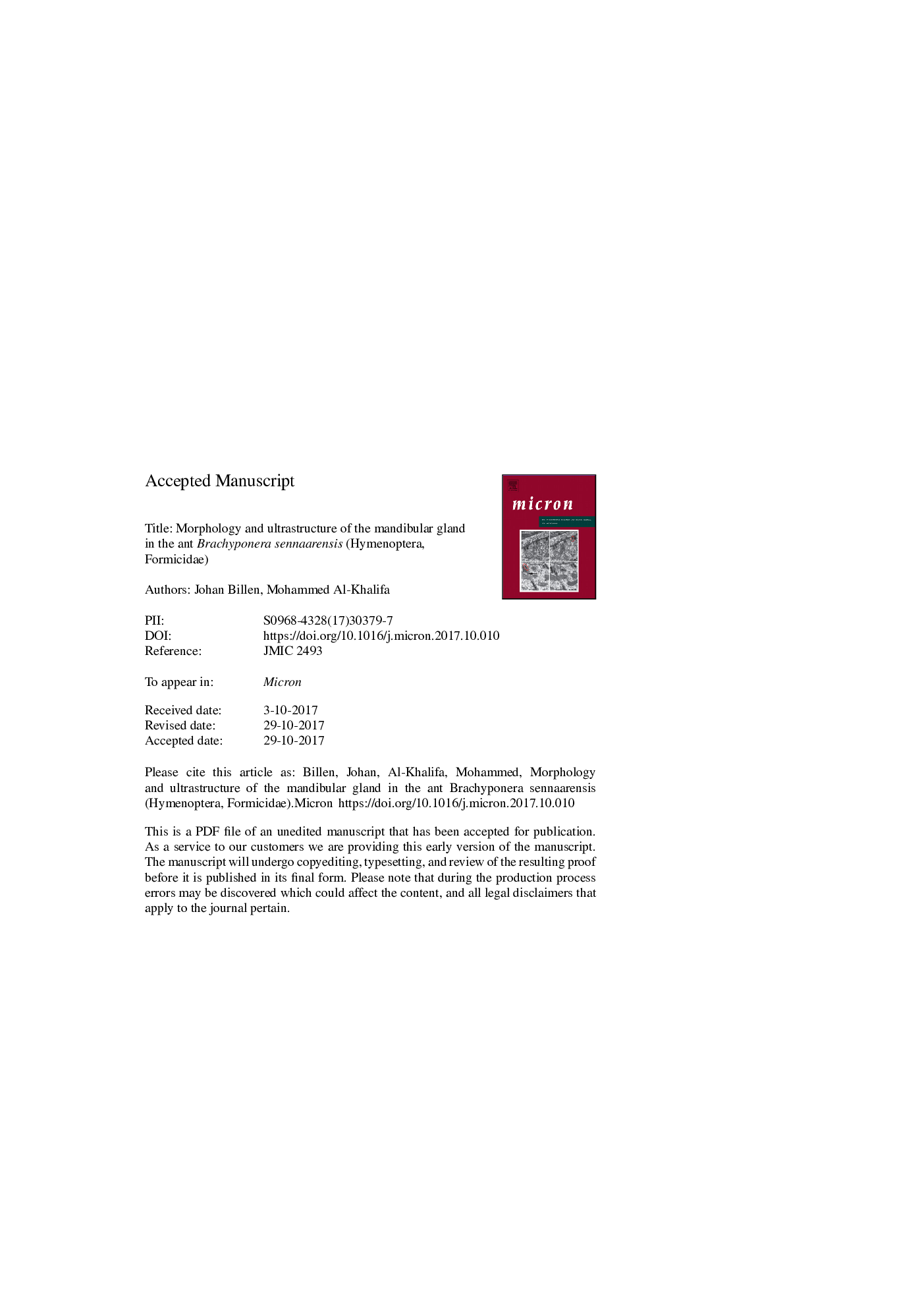| Article ID | Journal | Published Year | Pages | File Type |
|---|---|---|---|---|
| 7986266 | Micron | 2018 | 20 Pages |
Abstract
The 'samsum ant' Brachyponera sennaarensis is an invasive species in Saudi Arabia, where it forms a serious threat because of its painful sting. As part of a morphological survey of the exocrine system of this species, we studied the mandibular gland of males, queens and workers of this species. The gland of males is similar to the common anatomical appearance the mandibular gland has in ants in general, but is considerably different in queens and workers. In both female castes, the secretory cells are grouped in one single cluster, that is surrounded by a thick sheath of connective tissue. The duct cells, that transport the secretion towards the wrinkled reservoir, appear considerably folded. Both the sheath of connective tissue and the folded ducts are considered as a mechanical reinforcement of the gland, although the reason for such reinforcement remains unclear as we are not aware of any peculiar movements of the mandibles in queens and workers. At the ultrastructural level, the secretory cells in all castes are characterized by a well-developed smooth endoplasmic reticulum, which is indicative for the elaboration of a non-proteinaceous and hence possibly pheromonal secretion. The clear structural differences between males and the two female castes, which so far had not been found in other ant species, show that the mandibular gland in B. sennaarensis most likely has a different caste-dependent function.
Keywords
Related Topics
Physical Sciences and Engineering
Materials Science
Materials Science (General)
Authors
Johan Billen, Mohammed Al-Khalifa,
